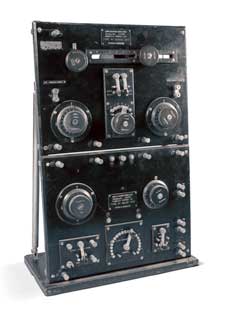
AWA P1 Wireless Receiver
1919
Click Click here
to see the entire AWA spark gap receiver and transmitter |
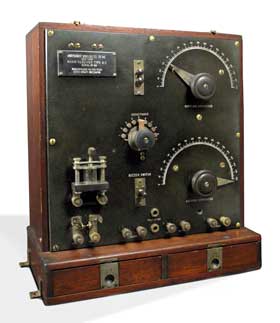
Independent Wireless Telegraph A-1
c. 1915 |
|
|
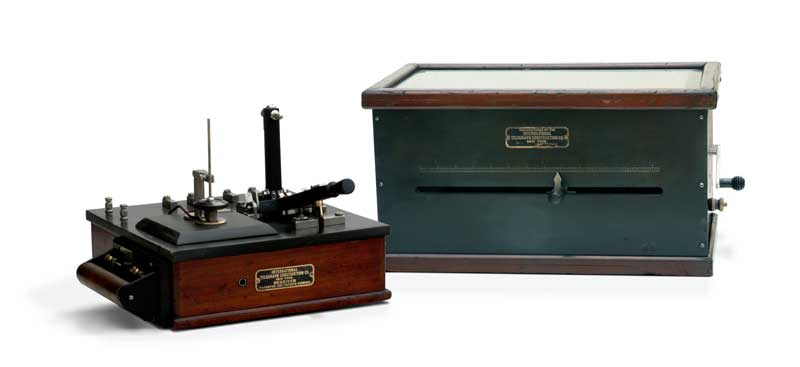
Recieving Set - Detector
and Tuning Inductance
International Telegraph Construction Co.
c.
1906
Detector features an
electrolytic detector utilizing platinum wire in a
20% sulfuric acid solution. Paper tag reads: "SN
1702 from USS Ozark."
The large lever is an
antenna switch, used to disconnect the receiver
from the antenna when the transitter (not shown)
is operating. To my knowlege, this is the only
example of this receiver that has
survived.
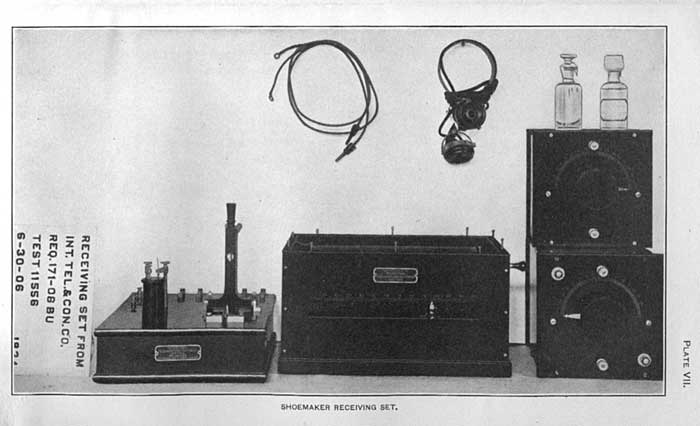
Photo of the International Telegraph Construction Co. receiving set, designed
by the famous wireless engineer Harry
Shoemaker. This image is from the book
"Manual of Wireless Telegraphy for Naval
Electricians" by S.S. Robison (1913).
|
|
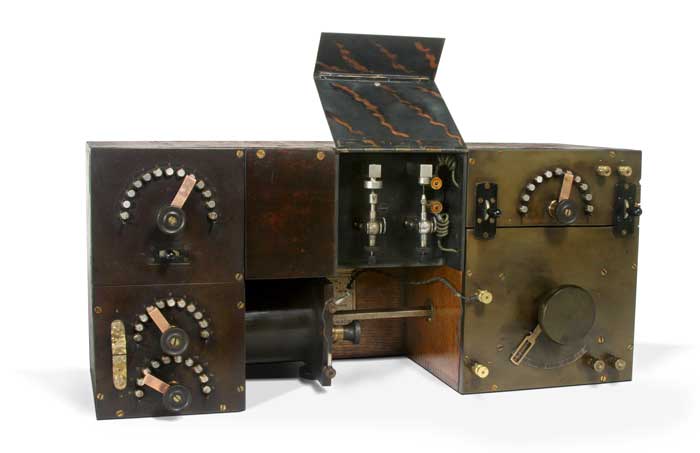
Wireless Specialty Apparatus
Co.
IP-76 Receiver
c. 1910
A fine example - only a few of
these early receivers have
survived.
|
|
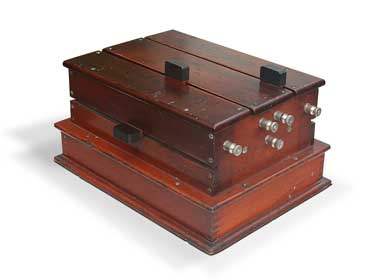
2-coil
Syntonizer
The Radio Company (De Forest)
c.
1906
Also known as the United Wireless
Type A tuner, this very rare device was designed
by the great wireless engineer Harry Shoemaker.
|
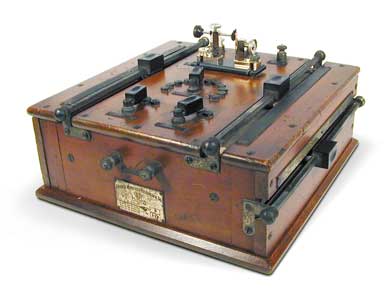
Type
D Tuner
United Wireless Telegraph Co.
c.
1910
|
|
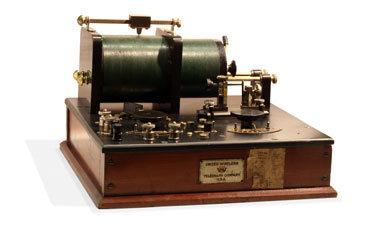
Type E
Tuner
United Wireless Telegraph Co.
c.
1912
|
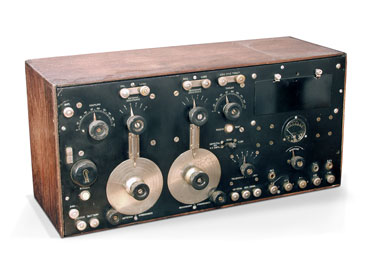
Wireless Specialty Apparatus Co.
IP501A Receiver
1920 |
|
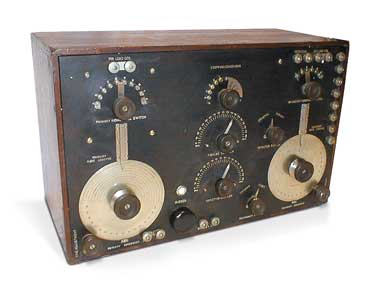
Wireless Specialty Apparatus Co.
SE-1220 Receiver
c.
1918
The SE-1220 is the
military version of the IP-500 radio
receiver.
|
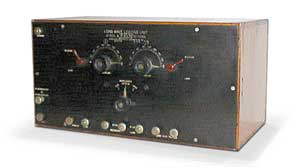
Wireless Specialty Apparatus Co.
IP-503
Long Wave Loading Unit
c. 1920
Designed for use with
the IP 500 and IP
501 radio receivers. When placed on top of either
receiver, the binding posts on the IP503 line up
with the loading coil terminals on the receivers.
Short jumper straps were used to link them
together. Use of these coils extended the
frequency range of the receivers to 19,000
meters, the longest wavelength of commercial
stations in use.
|
|
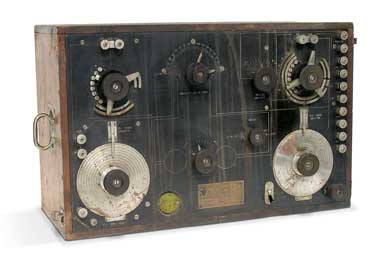
National Electrical Supply
Company
CN-240
c.
1917
|
|
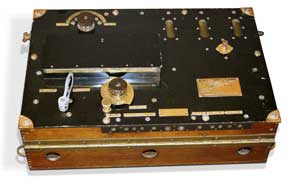
Western Electric
Co.
SCR-68
c.
1918 |
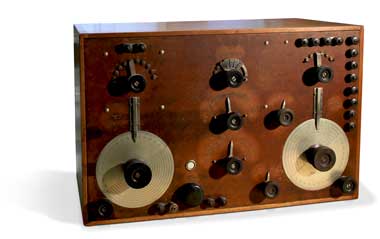
National
Electrical Supply
Company
SE-143A
c.
1918
This
receiver is the NESCO eqivalent of the
Wireless Specialty IP-500, both were
essential pieces of wartime of communications
gear.
|
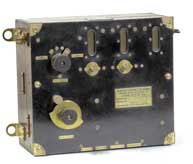
Western Electric SCR 59
1917
Another very early Signal Corp receiver,
designed for use in WWI aircraft.
Click on the image to see a larger
version |
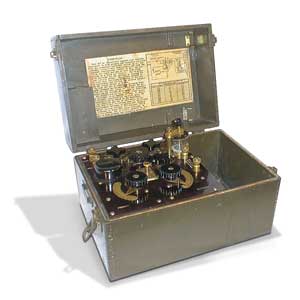
Deforest
BC-14A
c.
1917
The BC14A was designed for use
as an artillery spotting receiver during
WW1.
|
|
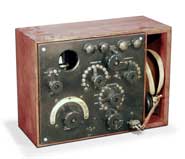
Westinghouse SCR 70
1917
Rare early Signal Corp communication receiver
designed by Frank Conrad. Conrad is considered by many
to be the father of commercial radio broadcasting. |
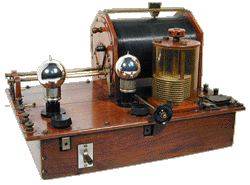
Unmarked Early Two-Valve Receiver
(British) |
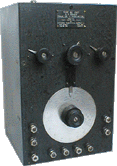
National Electrical Supply
SE 1387 RF Driver
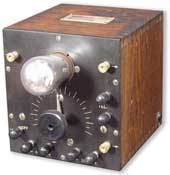
International Radio &
Telegraph Co.
Vacuum Tube Tuner |
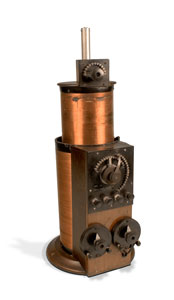
Radio Apparatus Co.
Long Wave Tuner
c.
1920
|
|
|
|